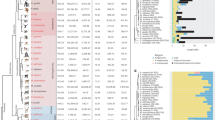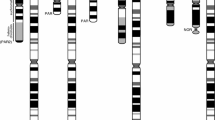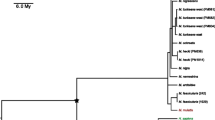Abstract
Compared with the X chromosome, the mammalian Y chromosome is considerably diminished in size and has lost most of its ancestral genes during evolution. Interestingly, for the X-degenerate region on the Y chromosome, human has retained all 16 genes, while chimpanzee has lost 4 of the 16 genes since the divergence of the two species. To uncover the evolutionary forces governing ape Y chromosome degeneration, we determined the complete sequences of the coding exons and splice sites for 16 gorilla Y chromosome genes of the X-degenerate region. We discovered that all studied reading frames and splice sites were intact, and thus, this genomic region experienced no gene loss in the gorilla lineage. Higher nucleotide divergence was observed in the chimpanzee than the human lineage, particularly for genes with disruptive mutations, suggesting a lack of functional constraints for these genes in chimpanzee. Surprisingly, our results indicate that the human and gorilla orthologues of the genes disrupted in chimpanzee evolve under relaxed functional constraints and might not be essential. Taking mating patterns and effective population sizes of ape species into account, we conclude that genetic hitchhiking associated with positive selection due to sperm competition might explain the rapid decline in the Y chromosome gene number in chimpanzee. As we found no evidence of positive selection acting on the X-degenerate genes, such selection likely targets other genes on the chimpanzee Y chromosome.

Similar content being viewed by others
References
Bakewell MA, Shi P, Zhang J (2007) More genes underwent positive selection in chimpanzee evolution than in human evolution. Proc Natl Acad Sci USA 104:7489–7494
Blagosklonova O, Fellmann F, Clavequin MC, Roux C, Bresson JL (2000) AZFa deletions in Sertoli cell-only syndrome: a retrospective study. Mol Hum Reprod 6:795–799
Charlesworth B, Charlesworth D (2000) The degeneration of Y chromosomes. Philos Trans R Soc Lond B Biol Sci 355:1563–1572
Chen FC, Li WH (2001) Genomic divergences between humans and other hominoids and the effective population size of the common ancestor of humans and chimpanzees. Am J Hum Genet 68:444–456
Dixson AF (1998) Primate sexuality: comparative studies of the prosimians, monkeys, apes, and human beings. Oxford University Press, New York
Fischer A, Wiebe V, Pääbo S, Przeworski M (2004) Evidence for a complex demographic history of chimpanzees. Mol Biol Evol 21:799–808
Fischer A, Pollack J, Thalmann O, Nickel B, Pääbo S (2006) Demographic history and genetic differentiation in apes. Curr Biol 16:1133–1138
Gayral P, Caminade P, Boursot P, Galtier N (2007) The evolutionary fate of recently duplicated retrogenes in mice. J Evol Biol 20:617–626
Gerrard DT, Filatov DA (2005) Positive and negative selection on mammalian Y chromosomes. Mol Biol Evol 22:1423–1432
Glazko GV, Nei M (2003) Estimation of divergence times for major lineages of primate species. Mol Biol Evol 20:424–434
Goldman N, Yang Z (1994) A codon-based model of nucleotide substitution for protein-coding DNA sequences. Mol Biol Evol 11:725–736
Goodall J (1986) The chimpanzees of Gombe: patterns of behavior. Harvard University Press, Cambridge, MA
Graves JA (2006) Sex chromosome specialization and degeneration in mammals. Cell 124:901–914
Greenfield A, Carrel L, Pennisi D, Philippe C, Quaderi N, Siggers P, Steiner K, Tam PP, Monaco AP, Willard HF, Koopman P (1998) The UTX gene escapes X inactivation in mice and humans. Hum Mol Genet 7:737–742
Hasegawa T, Hiraiwai-Hasegawa M (1990) Sperm competition and mating behavior. In: Nishida T (ed) The chimpanzees of the Mahale mountains: sexual and life history strategies. University of Tokyo Press, Tokyo, pp 115–132
Hinrichs AS, Karolchik D, Baertsch R, Barber GP, Bejerano G, Clawson H, Diekhans M, Furey TS, Harte RA, Hsu F, Hillman-Jackson J, Kuhn RM, Pedersen JS, Pohl A, Raney BJ, Rosenbloom KR, Siepel A, Smith KE, Sugnet CW, Sultan-Qurraie A, Thomas DJ, Trumbower H, Weber RJ, Weirauch M, Zweig AS, Haussler D, Kent WJ (2006) The UCSC Genome Browser Database: update 2006. Nucleic Acids Res 34:D590–D598
Hughes JF, Skaletsky H, Pyntikova T, Minx PJ, Graves T, Rozen S, Wilson RK, Page DC (2005) Conservation of Y-linked genes during human evolution revealed by comparative sequencing in chimpanzee. Nature 437:100–103
Kaessmann H, Wiebe V, Pääbo S (1999) Extensive nuclear DNA sequence diversity among chimpanzees. Science 286:1159–1162
Kuroki Y, Toyoda A, Noguchi H, Taylor TD, Itoh T, Kim DS, Kim DW, Choi SH, Kim IC, Choi HH, Kim YS, Satta Y, Saitou N, Yamada T, Morishita S, Hattori M, Sakaki Y, Park HS, Fujiyama A (2006) Comparative analysis of chimpanzee and human Y chromosomes unveils complex evolutionary pathway. Nat Genet 38:158–167
Lahn BT, Page DC (1999) Four evolutionary strata on the human X chromosome. Science 286:964–967
Lahn BT, Pearson NM, Jegalian K (2001) The human Y chromosome, in the light of evolution. Nat Rev Genet 2:207–216
Makova KD, Li WH (2002) Strong male-driven evolution of DNA sequences in humans and apes. Nature 416:624–626
Maynard Smith J, Haigh J (1974) The hitch-hiking effect of a favourable gene. Genet Res 23:23–35
Muller HJ (1914) A gene for the forth chromosome of Drosophila. J Exp Zool 17:325–336
Murphy WJ, Pearks Wilkerson AJ, Raudsepp T, Agarwala R, Schäffer AA, Stanyon R, Chowdhary BP (2006) Novel gene acquisition on carnivore Y chromosomes. PLoS Genet 2:e43
Nei M, Gojobori T (1986) Simple methods for estimating the numbers of synonymous and nonsynonymous nucleotide substitutions. Mol Biol Evol 3:418–426
Ohno S (1967) Monographs on endocrinology. Sex chromosomes and sex-linked genes, 1st edn. Springer, Heidelberg
Ono S (2003) Regulation of actin filament dynamics by actin depolymerizing factor/cofilin and actin-interacting protrin 1: new blades for twisted filaments. Biochemistry 42:13363–13370
Perry GH, Tito RY, Verrelli BC (2007) The evolutionary history of human and chimpanzee Y-chromosome gene loss. Mol Biol Evol 24:853–859
Potrzebowski L, Vinckenbosch N, Marques AC, Chalmel F, Jégou B, Kaessmann H (2008) Chromosomal gene movements reflect the recent origin and biology of therian sex chromosomes. PLoS Biol 6:e80
Ross MT et al (2005) The DNA sequence of the human X chromosome. Nature 434:325–337
Rozen S, Skaletsky H (2000) Primer3 on the WWW for general users and for biologist programmers. Methods Mol Biol 132:365–386
Rozen S, Skaletsky H, Marszalek JD, Minx PJ, Cordum HS, Waterston RH, Wilson RK, Page DC (2003) Abundant gene conversion between arms of palindromes in human and ape Y chromosomes. Nature 423:873–876
Saitou N, Nei M (1987) The neighbor-joining method: a new method for reconstructing phylogenetic trees. Mol Biol Evol 4:406–425
Shi J, Xi H, Wang Y, Zhang C, Jiang Z, Zhang K, Shen Y, Jin L, Zhang K, Yuan W, Wang Y, Lin J, Hua Q, Wang F, Xu S, Ren S, Xu S, Zhao G, Chen Z, Jin L, Huang W (2003) Divergence of the genes on human chromosome 21 between human and other hominoids and variation of substitution rates among transcription units. Proc Natl Acad Sci USA 100:8331–8336
Skaletsky H, Kuroda-Kawaguchi T, Minx PJ, Cordum HS, Hillier L, Brown LG, Repping S, Pyntikova T, Ali J, Bieri T, Chinwalla A, Delehaunty A, Delehaunty K, Du H, Fewell G, Fulton L, Fulton R, Graves T, Hou SF, Latrielle P, Leonard S, Mardis E, Maupin R, McPherson J, Miner T, Nash W, Nguyen C, Ozersky P, Pepin K, Rock S, Rohlfing T, Scott K, Schultz B, Strong C, Tin-Wollam A, Yang SP, Waterston RH, Wilson RK, Rozen S, Page DC (2003) The male-specific region of the human Y chromosome is a mosaic of discrete sequence classes. Nature 423:825–837
Smith TF, Gaitatzes C, Saxena K, Neer EJ (1999) The WD repeat: a common architecture for diverse functions. Trends Biochem Sci 24:181–185
Stone AC, Griffiths RC, Zegura SL, Hammer MF (2002) High levels of Y-chromosome nucleotide diversity in the genus Pan. Proc Natl Acad Sci USA 99:43–48
Sun C, Skaletsky H, Birren B, Devon K, Tang Z, Silber S, Oates R, Page DC (1999) An azoospermic man with a de novo point mutation in the Y-chromosomal gene USP9Y. Nat Genet 23:429–432
Tajima F (1993) Simple methods for testing the molecular evolutionary clock hypothesis. Genetics 135:599–607
Tamura K, Nei M (1993) Estimation of the number of nucleotide substitutions in the control region of mitochondrial DNA in humans and chimpanzees. Mol Biol Evol 10:512–526
Tamura K, Dudley J, Nei M, Kumar S (2007) MEGA4: Molecular Evolutionary Genetics Analysis (MEGA) software version 4.0. Mol Biol Evol 24:1596–1599
Thalmann O, Fischer A, Lankester F, Pääbo S, Vigilant L (2007) The complex evolutionary history of gorillas: insights from genomic data. Mol Biol Evol 24:146–158
Veyrunes F, Waters PD, Miethke P, Rens W, McMillan D, Alsop AE, Grützner F, Deakin JE, Whittington CM, Schatzkamer K, Kremitzki CL, Graves T, Ferguson-Smith MA, Warren W, Marshall Graves JA (2008) Bird-like sex chromosomes of platypus imply recent origin of mammal sex chromosomes. Genome Res 18:965–973
Yang Z (1997) PAML: a program package for phylogenetic analysis by maximum likelihood. Comput Appl Biosci 13:555–556
Yang Z (1998) Likelihood ratio tests for detecting positive selection and application to primate lysozyme evolution. Mol Biol Evol 15:568–573
Yu N, Jensen-Seaman MI, Chemnick L, Kidd JR, Deinard AS, Ryder O, Kidd KK, Li WH (2003) Low nucleotide diversity in chimpanzees and bonobos. Genetics 164:1511–1518
Yu N, Jensen-Seaman MI, Chemnick L, Ryder O, Li WH (2004) Nucleotide diversity in gorillas. Genetics 166:1375–1383
Zhang J, Nielsen R, Yang Z (2005) Evaluation of an improved branch-site likelihood method for detecting positive selection at the molecular level. Mol Biol Evol 22:2472–2479
Acknowledgments
We are grateful to Chungoo Park, Saby Das, Allison N. Lau, Masafumi Nozawa, and Melissa Wilson for valuable suggestions. We also thank M. Paula Goetting-Minesky for experimental support at the early stages of this project. Meg Bakewell kindly provided the control files for PAML. One of the male gorilla DNA samples was provided by Robert Baker from the Natural Sciences Research Laboratory at Texas Tech University. This research was supported by startup funds from the Eberly College of Sciences at Pennsylvania State University to K.D.M.
Author information
Authors and Affiliations
Corresponding author
Electronic Supplementary Matrial
Rights and permissions
About this article
Cite this article
Goto, H., Peng, L. & Makova, K.D. Evolution of X-Degenerate Y Chromosome Genes in Greater Apes: Conservation of Gene Content in Human and Gorilla, But Not Chimpanzee. J Mol Evol 68, 134–144 (2009). https://doi.org/10.1007/s00239-008-9189-y
Received:
Revised:
Accepted:
Published:
Issue Date:
DOI: https://doi.org/10.1007/s00239-008-9189-y




